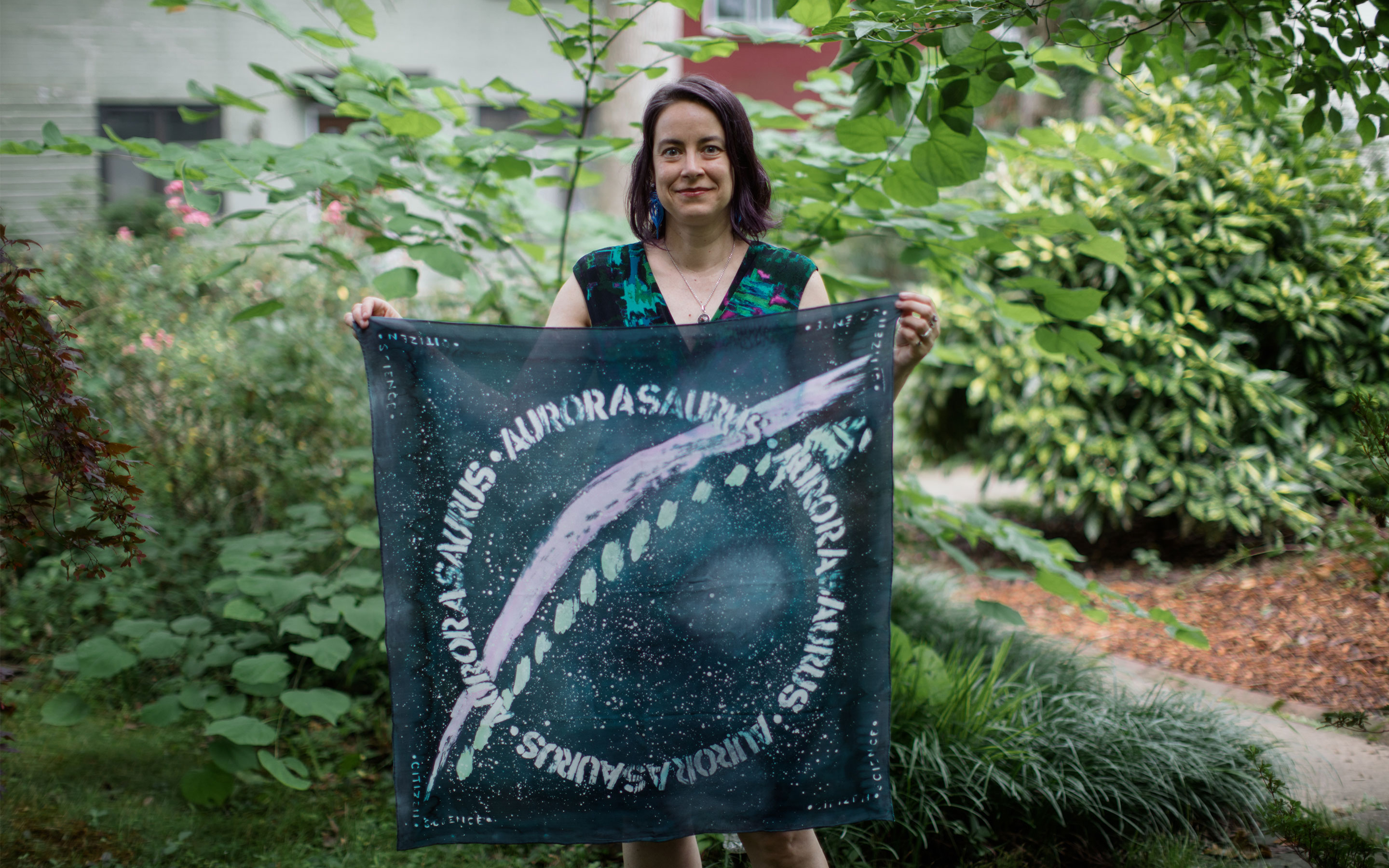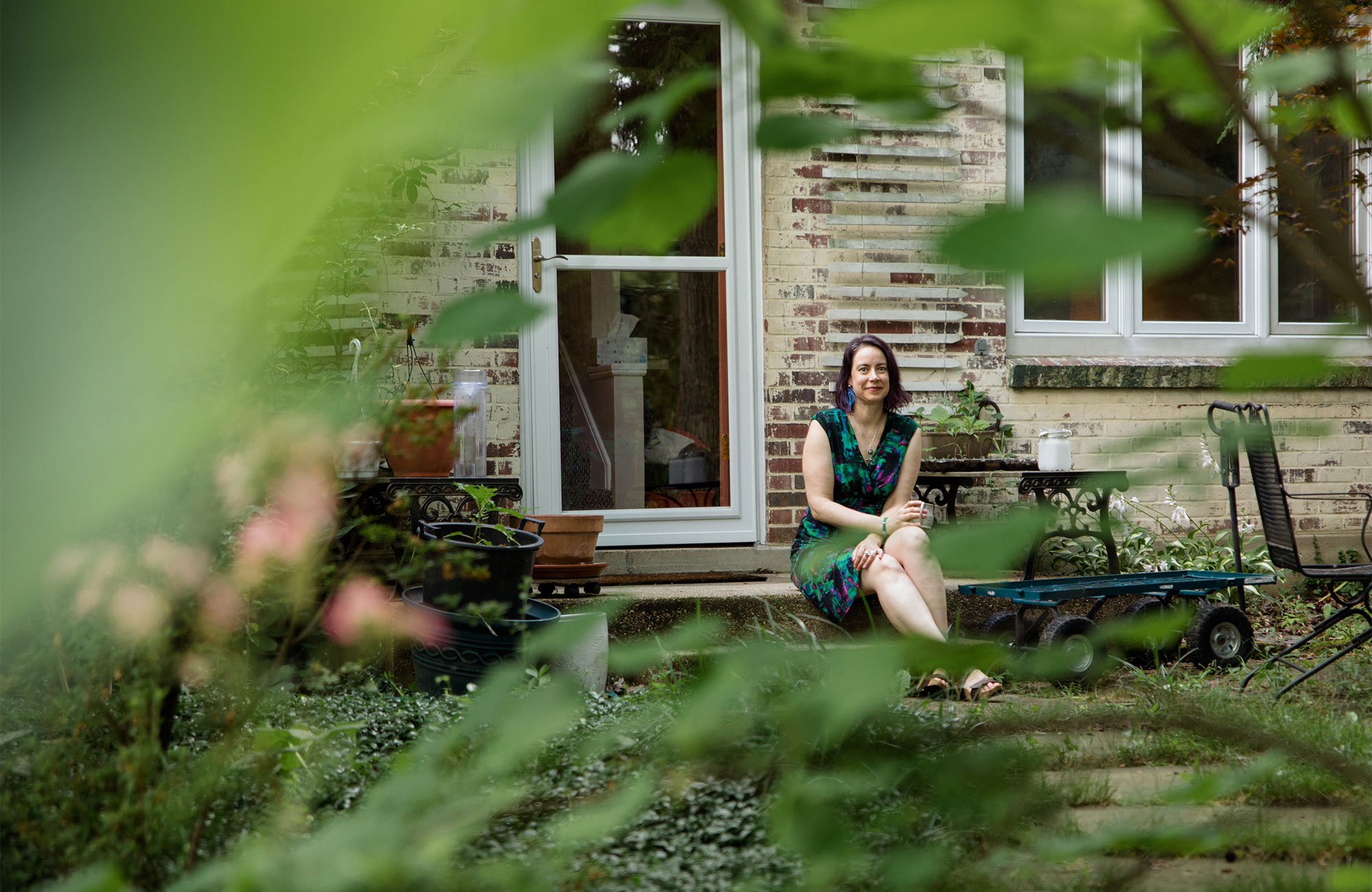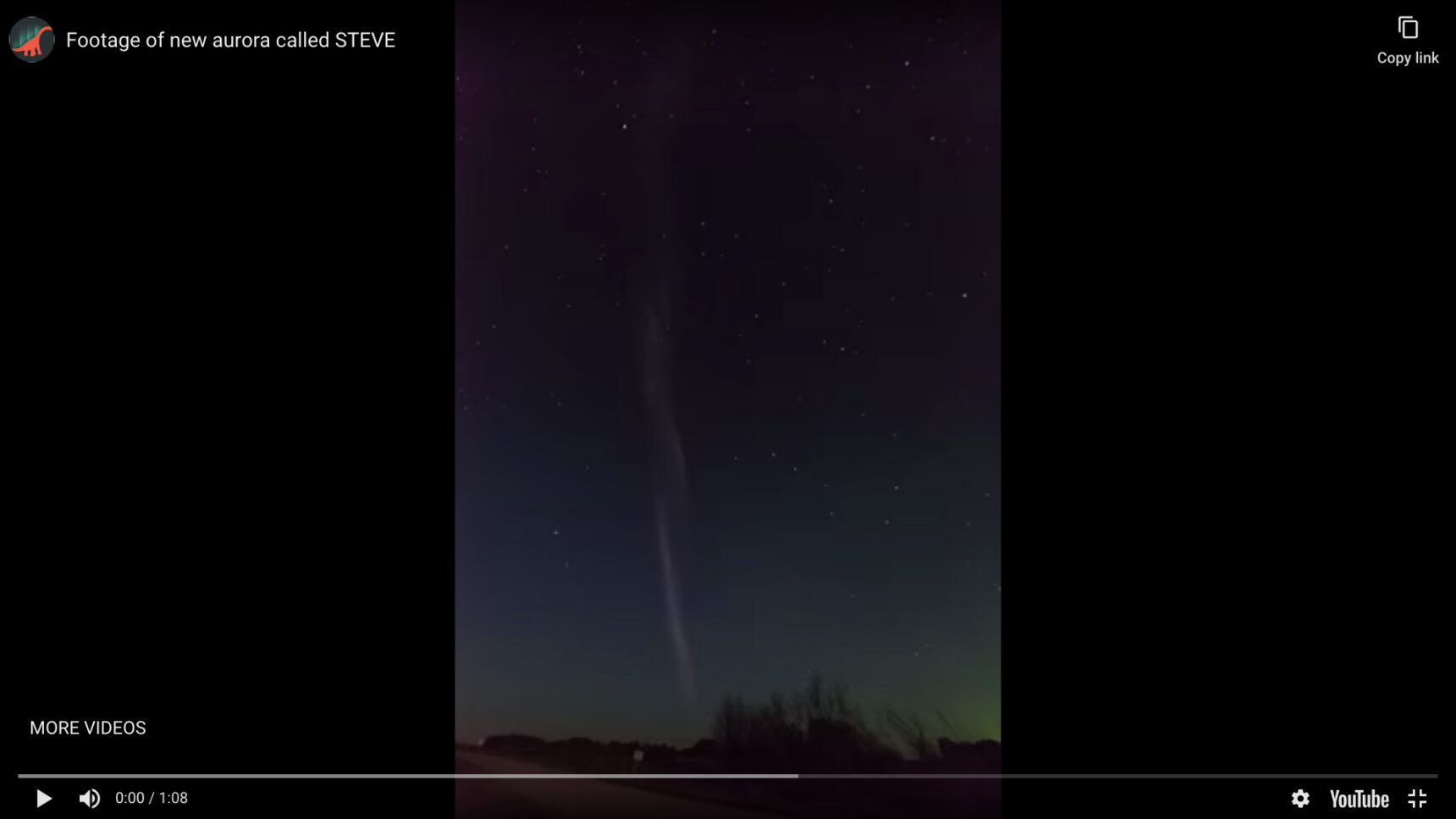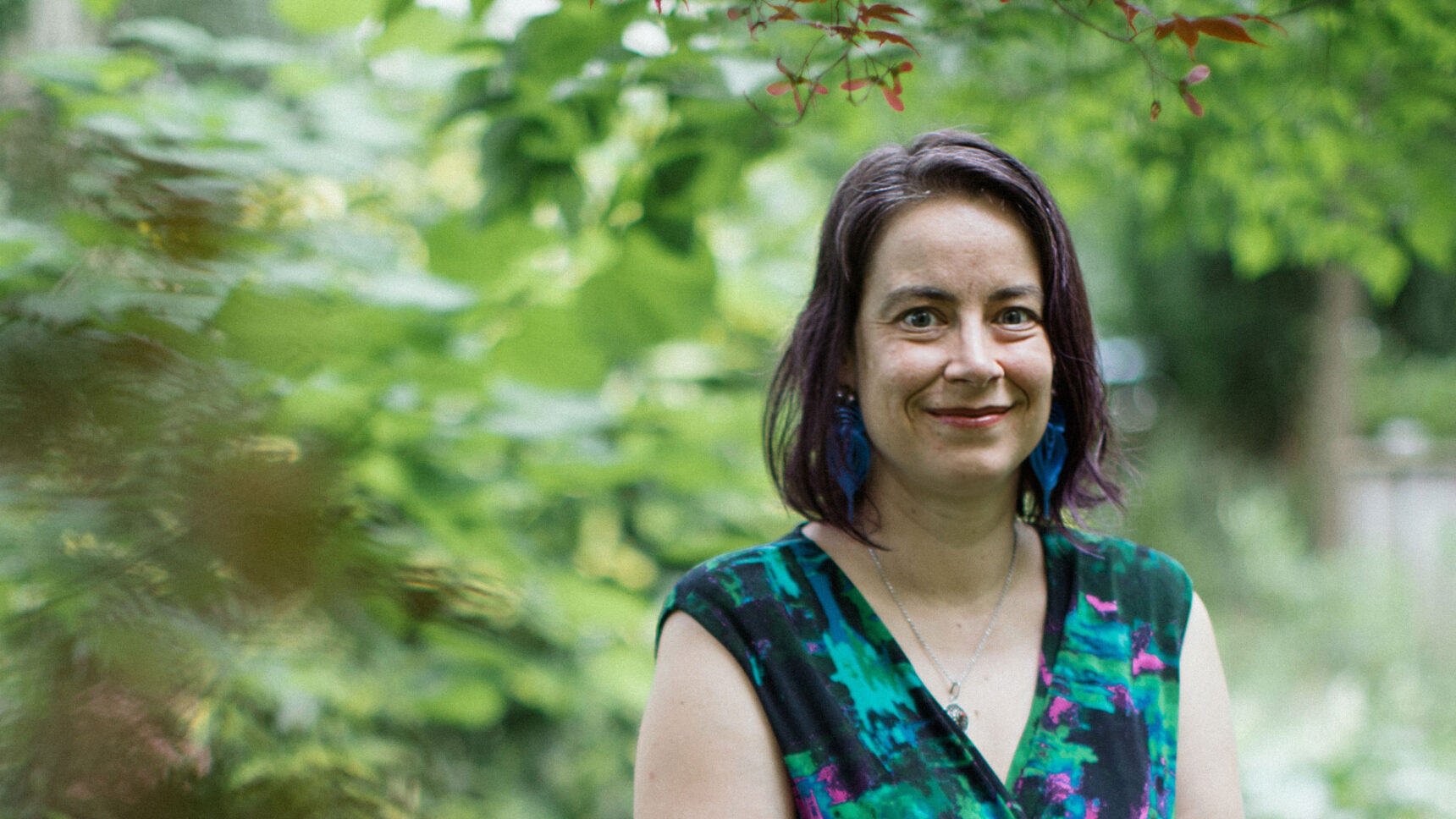The Scientist Leading the World’s Aurora Hunters

Liz MacDonald’s Aurorasaurus project was instrumental in identifying STEVE, a unique auroral phenomenon.
Rosem Morton for Quanta Magazine
Introduction
The shimmering sheets of spectral light we call auroras were once attributed to many preternatural acts or supernatural entities: a glowing bridge that led deceased warriors to their final resting place, or the whipping of the tail of a fire fox as it zipped across the snow. Today, we know that the northern and southern lights are a manifestation of space weather — the complex entanglement, destruction and reassembly of Earth’s magnetic tendrils as the sun’s charged particles rain down onto the planet’s atmospheric shell.
Like much that flickers in the night sky, auroras are as likely to inspire primal feelings of awe today as they were centuries ago. But serendipity plays an outsize role in the spotting of ephemeral auroras. That’s why Liz MacDonald — a space weather scientist at NASA’s Goddard Space Flight Center in Greenbelt, Maryland, and the de facto ringleader of the world’s aurora hunters — decided to cheat.
In 2011, a vibrant crimson aurora ignited the night skies in North America, stretching as far south as Alabama. Twitter — still in its relative infancy back then — lit up too, as people from across the continent shared their gleeful detections of it, often accompanied by their attempts at astrophotography. MacDonald was struck by the possibility of harnessing social media to crowdsource auroral observations.
She went on to found Aurorasaurus, a free citizen science platform that tracks the appearance of auroras in real time. Whenever someone sees an aurora, they log on to the website, sign into the app, or tweet about it, and a marker appears on a map of the world adorned with the time and location of their sighting. What was a kernel of an idea nine years ago has exploded into an international platform with thousands of aurora hunters keeping their eyes trained on incandescent skies.
Aurorasaurus doesn’t just vastly improve the odds of anyone out in the wilderness being able to locate these famous elusive displays themselves. Scientists also plunge into this ocean of data to improve their auroral forecast models, gaining a better understanding of the enigmatic electrified upper layers of the planet’s atmosphere as they do so.
Case in point: In 2018, researchers described a new auroral phenomenon that was discovered with the help of the platform. Aurora hunters had noticed an elongated purple arc, sometimes accompanied by what looked like a green picket fence, lingering at surprisingly low latitudes in the night skies over Alberta, Canada. They named it Steve, a reference to an animated comedy film in which woodland critters give that moniker to a shrub simply because they have no other word for it. MacDonald enjoyed the name so much that she turned it into the backronym STEVE, for Strong Thermal Emission Velocity Enhancement.
Quanta Magazine caught up with MacDonald over the phone, just as the coronavirus pandemic forced billions of people to hunker down in their own homes. The interview has been condensed and edited for clarity.


MacDonald has taken to working in the hammock outside her home since the pandemic started.
Rosem Morton for Quanta Magazine
How does it feel knowing that Aurorasaurus has grown into this enormous endeavor?
It’s totally unexpected. For a while, it was an idea that wouldn’t let go, you know? But we all know that scientists are fairly slow at doing things, and you’re definitely swimming upstream to do something like this. But the idea just wouldn’t go away. I had really no idea how big of a thing it could be.
We got a million-dollar grant — that was great — in 2013 to actually build the site. But it wasn’t fully recognized within my own community. I remember my first invited talk to speak about the topic — which I think wasn’t until 2015 or so. When I said, “We use data from Twitter,” the audience of space scientists laughed. And it surprised me, you know, that it was that funny. It is funny, but it also tells you something about how other people are not getting it. You definitely can’t convince everyone, but I think I’ve learned to believe in myself and in this less traditional work, and believe in it being very viable, both for the science and for the impact on people’s lives in all kinds of different ways.
After having scientists giggle at your data source, what was it like to use that source to discover STEVE?
It’s been really cool to be part of that discovery. The arcs themselves are not the discovery; the fact that we now understand part of the underlying phenomena is.
Actually, we just came out with a new paper working with an aurora historian named Michael Hunnekuhl in Germany, who went on a search through all kinds of modern and historical archives of auroras. He found many past observations [of STEVE] dating back hundreds of years, including observations by the famous Norwegian scientist Carl Størmer. Størmer took photographs of the aurora for 40 years, 100 years ago, and he observed STEVE on, like, seven dates. He described them as “feeble homogenous arcs of great altitude,” which is a pretty cool description.
There’s been a lot of discussion about STEVE. Some people think it’s an aurora, some people don’t. A 2019 paper suggested it’s a hybrid, with the purple bit being a “sky glow” instead. Is a sky glow an aurora by another name?
Sky glow is a term that’s already in use in the light pollution community, so that’s not my favorite term. I think we all agree that it’s not a typical aurora, caused by particles raining down on the atmosphere and transferring the energy as they go lower down the chute. In STEVE’s case, you have this crazy east-west flow, and that is somehow exciting neutral particles and causing light to be emitted.
So it’s very different, but I still think it behooves us to call it an aurora. There are many atypical kinds of auroras. There’s something called black aurora: It’s invisible, but it’s still particles that you can’t see doing plasma-physics kinds of things.
What we call [the aurora] is continuing to evolve. An aurora is many different things to many different people, to scientists and different cultures around the world.
When new papers on STEVE are published, do you think people should focus less on whether it’s an aurora or sky glow, and instead underscore the science behind it?
People can do whatever they want, including scientists. We all have the right to have our say on this.
The press is geared to encourage the drama, though.
Yeah. And you know, it’s interesting to learn what’s viral, the aspects of the drama and how that intersects with papers. It’s kind of crazy.
Are there any aspects of the auroras that you’d want more of the public to understand — something really basic, a misconception about them, perhaps?
There are a lot of misconceptions, which is more the fault of my side, the scientists’ side. But the main one is that it’s not the particles from the sun that are directly causing most of the auroras. Particles from the sun enter the Earth’s magnetic field region, and a whole bunch of complicated stuff happens in there, and those particles are eventually trapped on the magnetic field lines of the Earth and are transported away to the night side of the Earth. The aurora is the result of a continuous process of that energy coming into the Earth’s magnetic field, being stored, and then being released back to Earth.
But all that is especially hard to explain using 2D pictures.

MacDonald outside her home in Greenbelt, Maryland.
Rosem Morton for Quanta Magazine
Do you have a favorite spot to go see the auroras?
Yeah! I am not technically allowed to endorse a place. But I recently got to go to a remote lodge outside Yellowknife in Canada, and I also got to go to Fairbanks, Alaska. I’ve seen the aurora in many different places, but it’s constantly varying, and it’s always super cool to see. For me, the experience of going to this lodge where you can just walk outside at night and see the aurora from anywhere on the property — including the hot tub — was really amazing. And you know, you have to have a bit of luck involved, but even though it’s the solar minimum right now — the sun is not that active — when you go that far north, if it’s not snowing the whole time, the everyday aurora, and this constant energy storage and release that happens every three or four hours, can be spectacular.
Under the pandemic, can you still go to these remote places and still abide by social distancing rules?
No, that lodge had to close. You can’t have tours come in, and they’re off-grid, they have no medical facilities, that sort of thing. You have to take a seaplane to get there. We got really, really lucky in our timing. And I’ve been very fortunate this past year to see auroras in Norway in September, when I got to go to Svalbard as part of the Hearts in the Ice expedition.
[Editor’s note: The Hearts in the Ice expedition involves two polar adventurers, Hilde Fålun Strøm and Sunniva Sorby, who are spending a year in a remote corner of Svalbard conducting citizen science projects for various organizations, including Aurorasaurus.]
They are closer to the aurora — which is 10 times higher than the clouds — than to the nearest town. And they are locked in the ice. They are remarkable, badass women. And their expedition is quite remarkable: They’re educating people, Skyping into classrooms, doing all kinds of citizen science projects, and raising awareness of climate change.
While we’re all riding out the pandemic, are memories of past aurora viewings and thoughts of future expeditions keeping you sane?
I’m doing science here at my house. It’s not aurora-related, but that is keeping me sane. And with citizen science, you can vicariously experience other environments. People who are in Alaska and Canada and other places — the aurora is still happening there. And people are still contributing. You can follow along and see some of their beautiful photographs and observations.
Does the thrill of Aurorasaurus largely come from the idea of making scientific discoveries, or just getting more people to look up at the auroras in wonder?
The beauty is that these data are scientifically useful and that we can then help people be more successful at seeing the northern lights. There’s also the fact that we’re leveraging and communicating with people that are already experts in these phenomena. We’re getting help from them, and then it’s a question of how we can give back.
But also, for me, it’s been a way to reconnect with [the aurora’s] beauty. Some of that beauty, when you actually study the auroras and the data and all of that stuff, it can kind of get beaten out of you. So that’s where I’m coming from.





